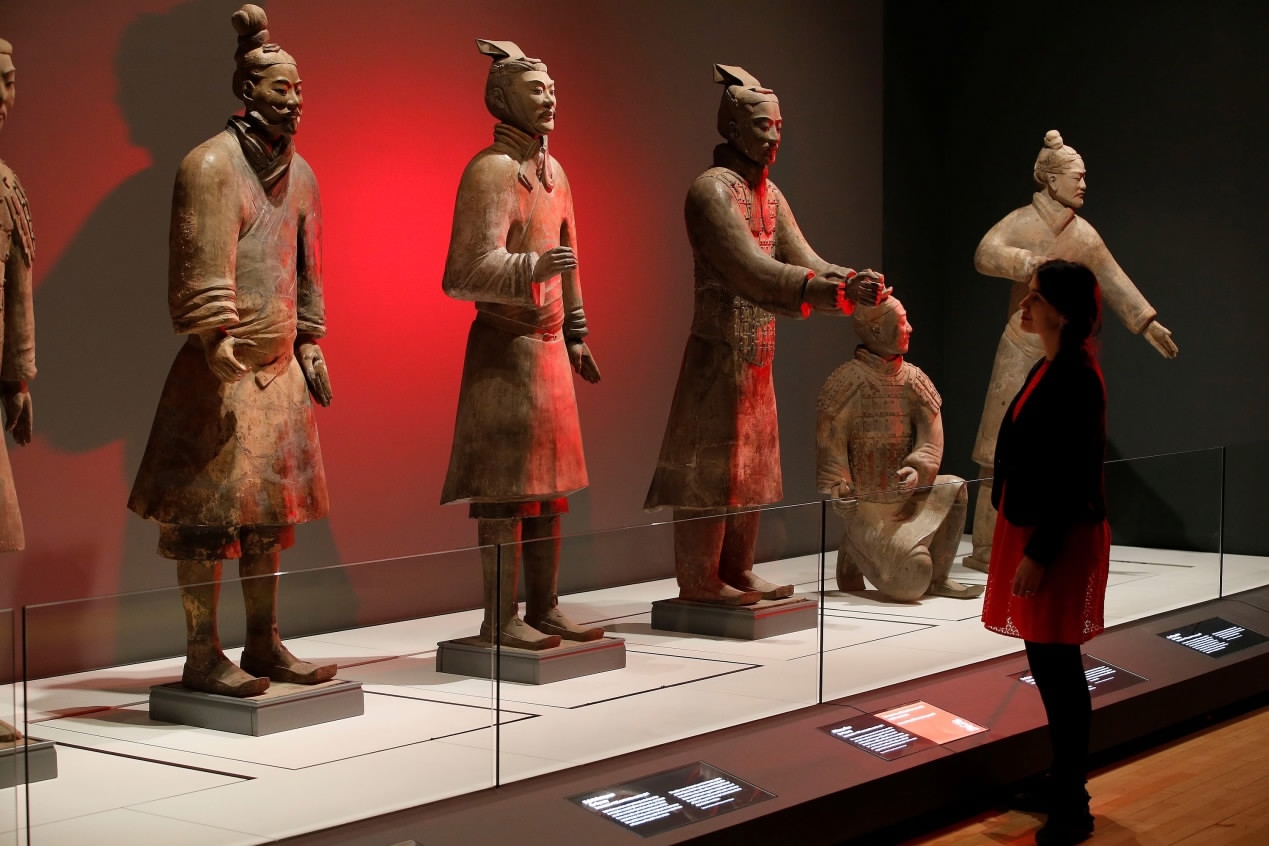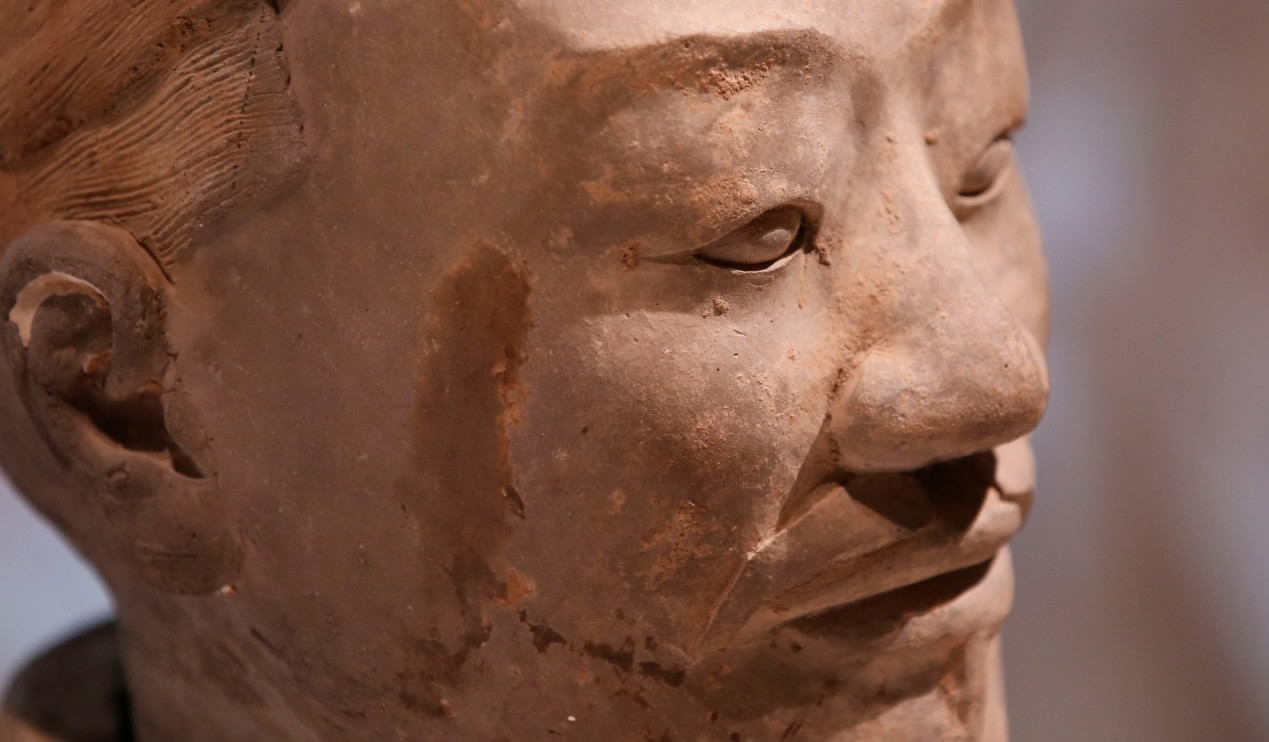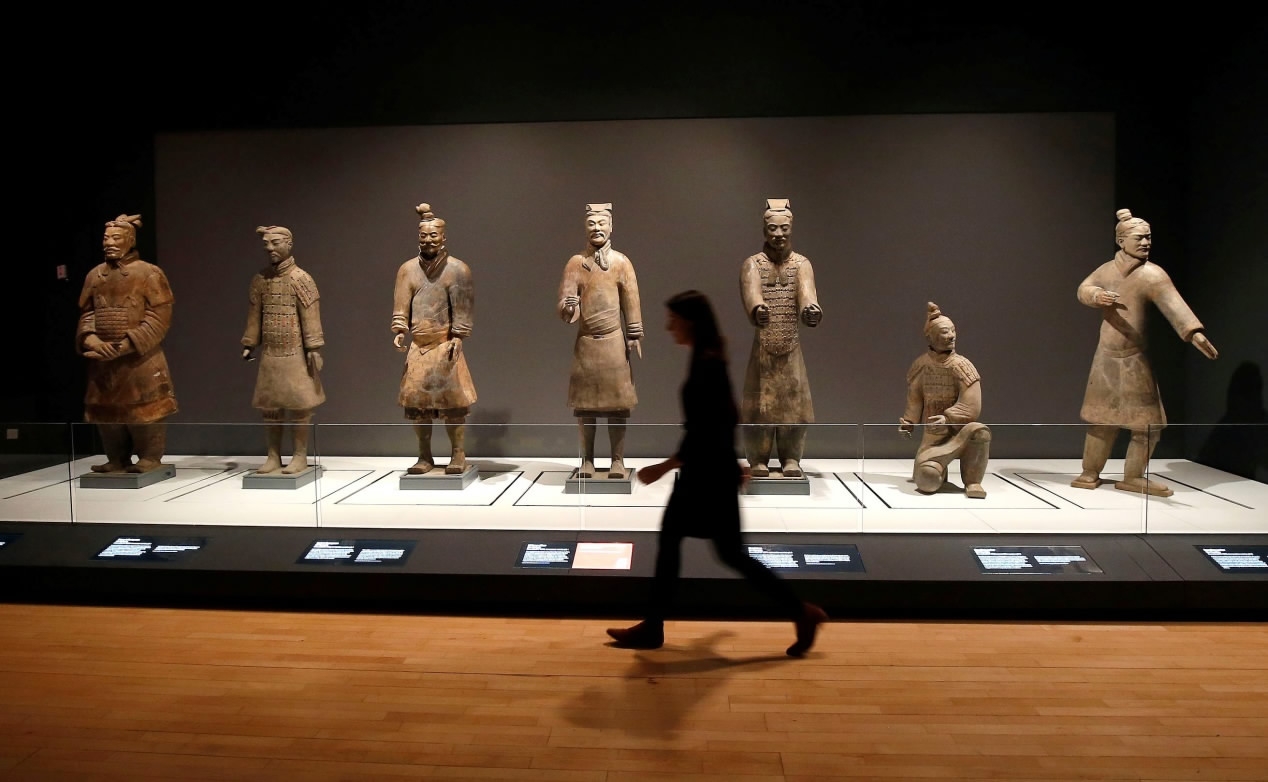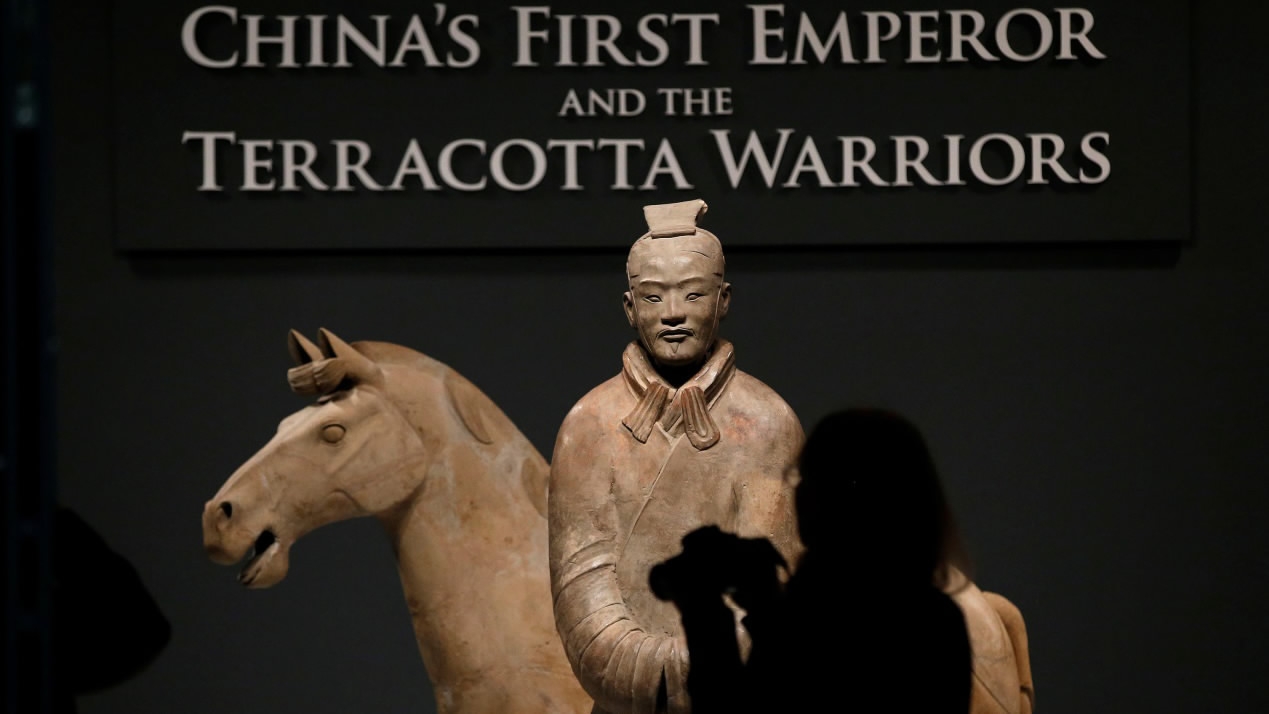The National Museums Liverpool is expecting hundreds of thousands of visitors to throng its Terracotta Warriors exhibition. Sculptures from China’s famed Terracotta Army are being displayed from Friday – a decade after the life-sized statues were first exhibited in the United Kingdom.
Visitors are able to get a glimpse into the life and legacy of
China’s first emperor and see over 120 rare objects, including eight terracotta tomb warriors, two horses and other amazing artifacts from this extraordinary archaeological
excavation.

A member of the museum staff looks at a display of Terracotta Warriors which guarded the tomb of China’s first emperor, Qin Shi Huang, on loan from China in The World Museum, Liverpool, Britain, February 6, 2017. /Reuters Photo
A member of the museum staff looks at a display of Terracotta Warriors which guarded the tomb of China’s first emperor, Qin Shi Huang, on loan from China in The World Museum, Liverpool, Britain, February 6, 2017. /Reuters Photo
The Terracotta Warriors were created 2,000 years ago and buried with China's
first emperor Qin Shi Huang to protect him in the afterlife.
For most British visitors, this is a rare
opportunity to view treasures from one of the greatest archaeological
discoveries of the time.

A Terracotta Warrior which guarded the tomb of China’s first emperor, Qin Shi Huang, on loan from China is displayed in The World Museum, Liverpool, Britain, February 6, 2017. /Reuters Photo
A Terracotta Warrior which guarded the tomb of China’s first emperor, Qin Shi Huang, on loan from China is displayed in The World Museum, Liverpool, Britain, February 6, 2017. /Reuters Photo
An exhibit of objects, including bronze ritual and jade artifacts, gold and silver ornaments, and palatial architectural components, illustrates the emergence of the Qin State more than 2,000 years ago. Born in a time of turmoil in China’s history, Qin Shi Huang, the country's first emperor, founded the Qin dynasty. He forged the seven warring states into one nation, and his legacy of a centralized bureaucratic state was carried on to successive dynasties over the next two millennia.

A member of the museum staff looks at a display of Terracotta Warriors which guarded the tomb of China’s first emperor, Qin Shi Huang, on loan from China in The World Museum, Liverpool, Britain, February 6, 2017. /Retuers Photo
A member of the museum staff looks at a display of Terracotta Warriors which guarded the tomb of China’s first emperor, Qin Shi Huang, on loan from China in The World Museum, Liverpool, Britain, February 6, 2017. /Retuers Photo
In 2015, China and the UK signed an agreement to bring the Terracotta Warriors to Liverpool. The figures were discovered in 1974 and since then, more than 8,000 life-size Terracotta Warriors have been unearthed across four large pits. Each soldier was found with its own clothing, hair and facial features.
The exhibition runs until October 28 at the National Museums Liverpool.





